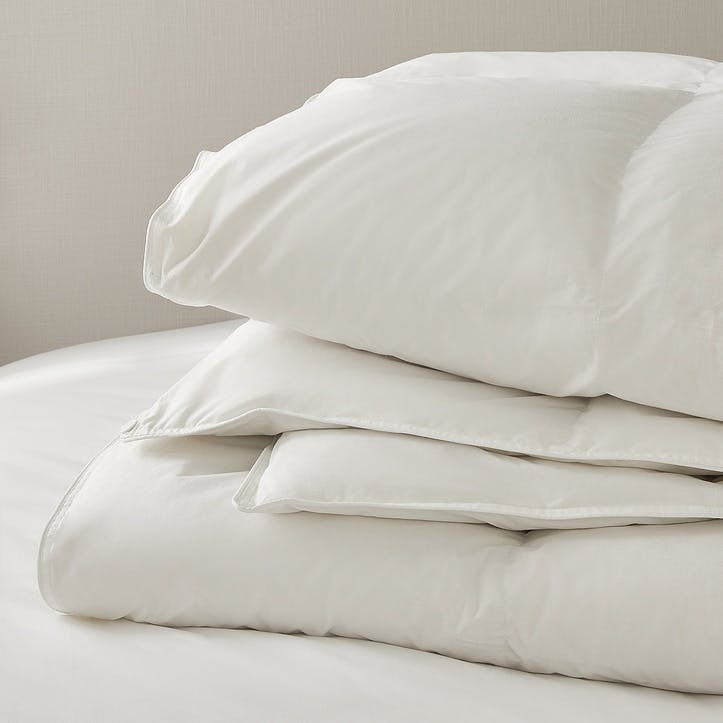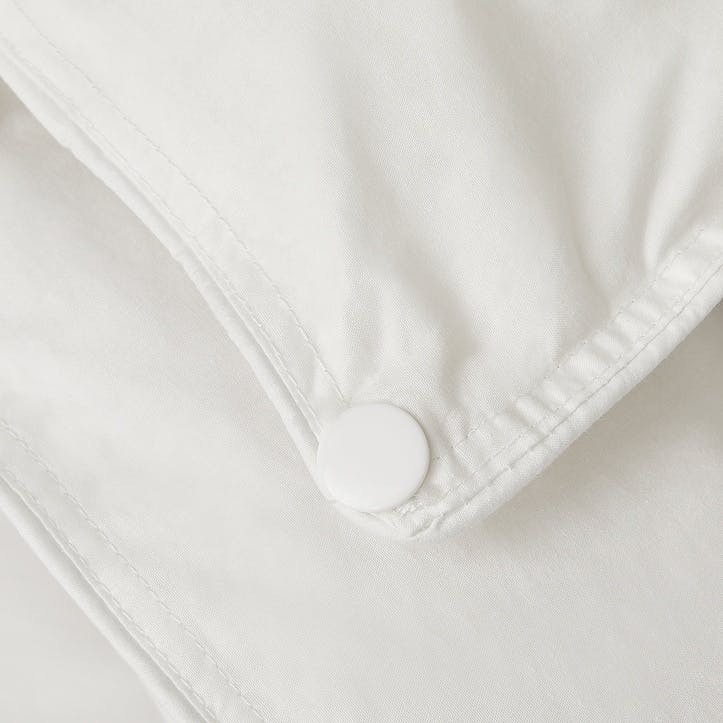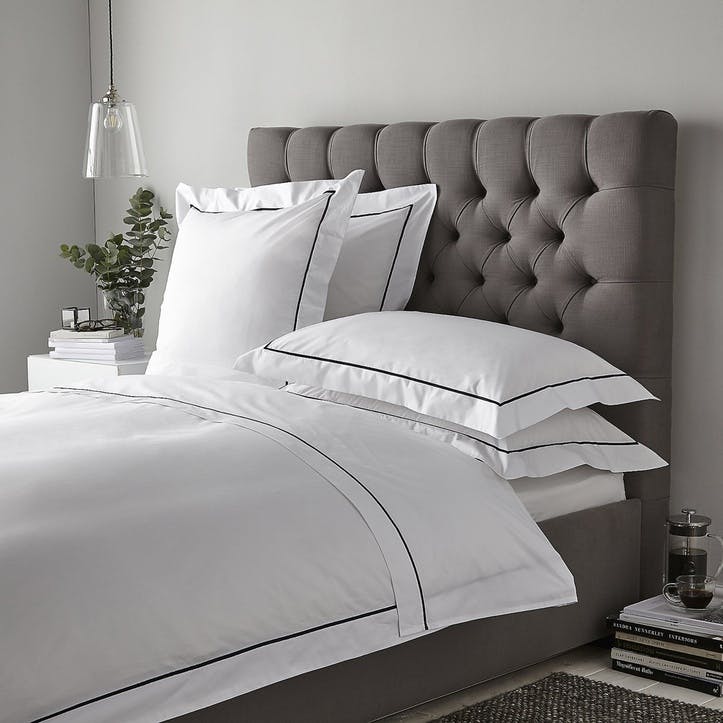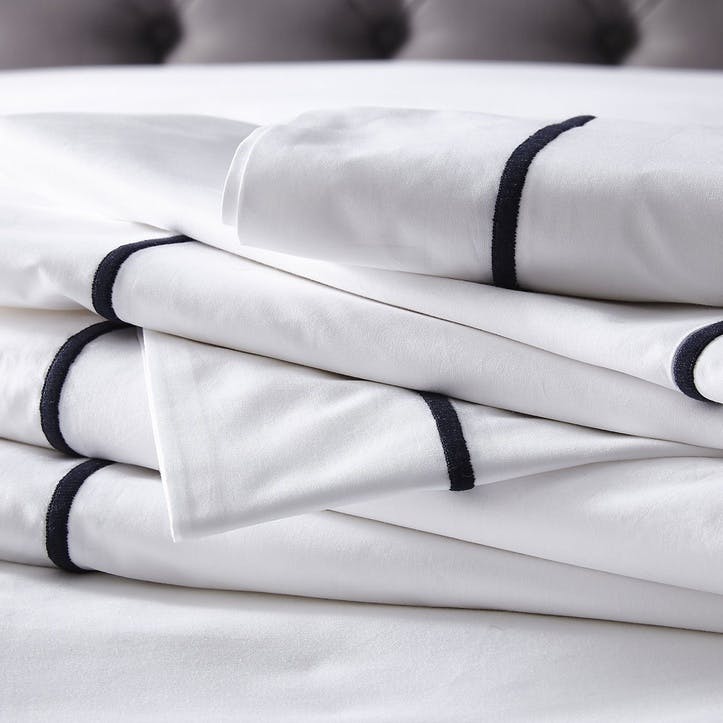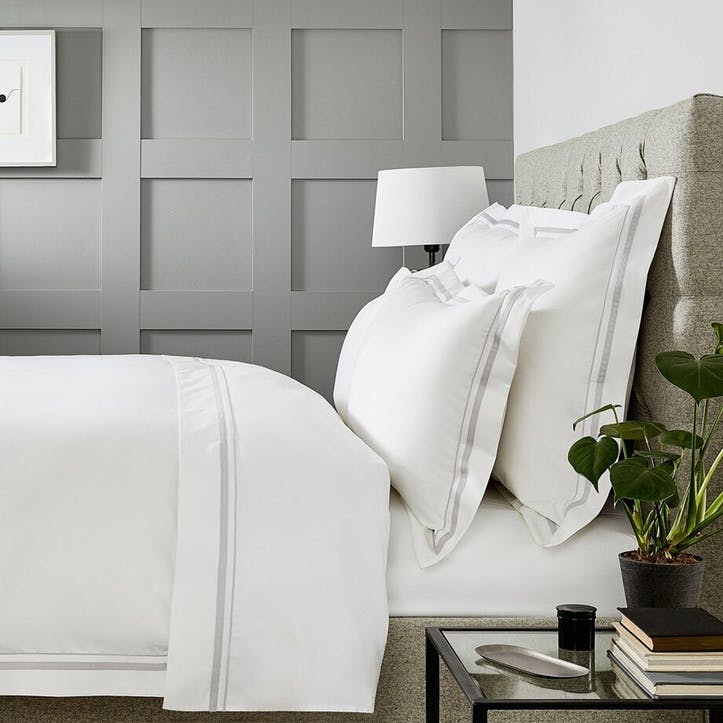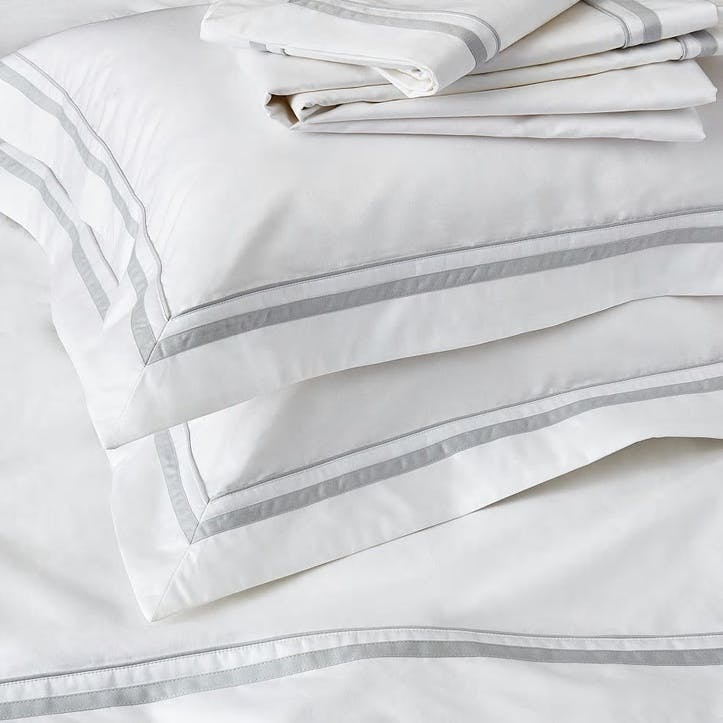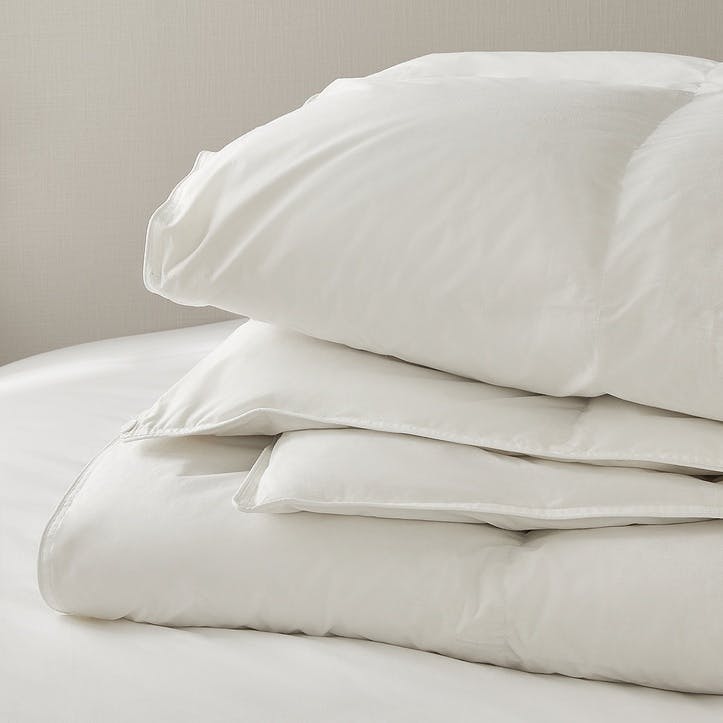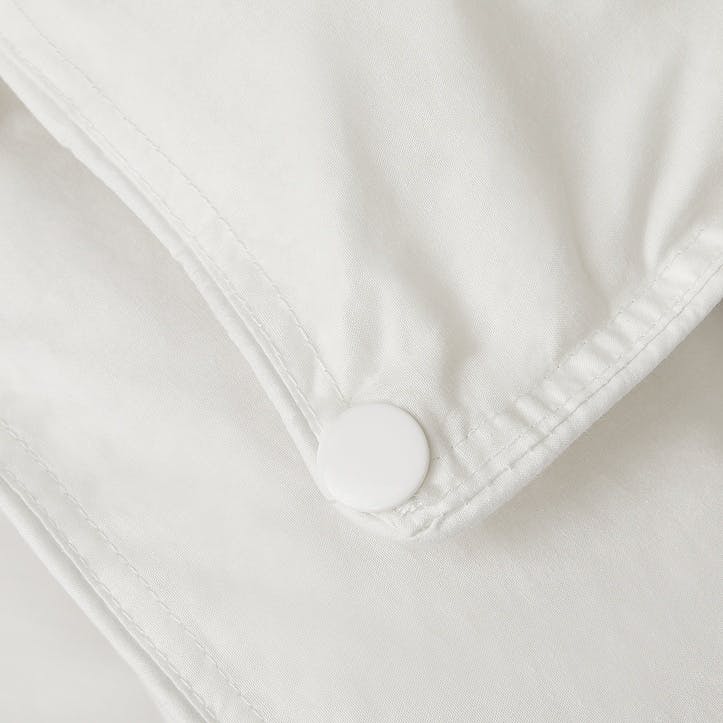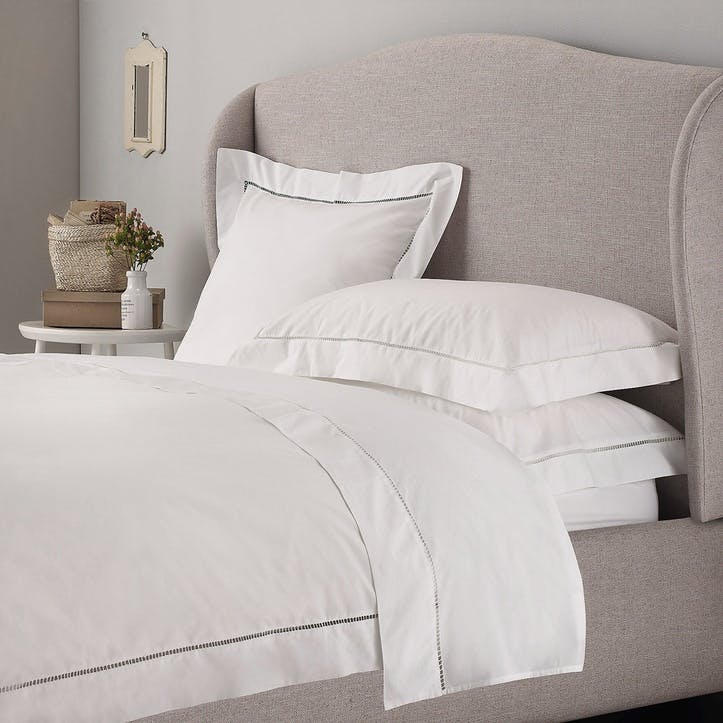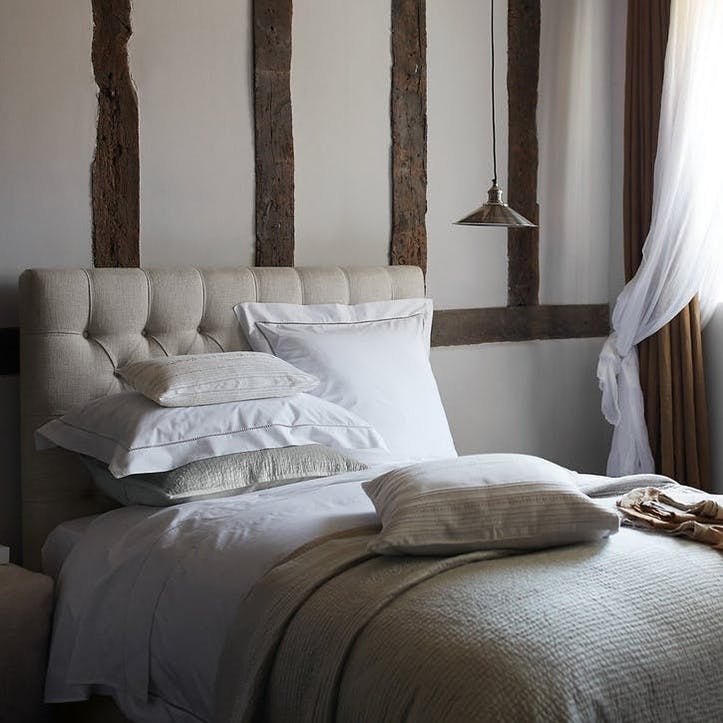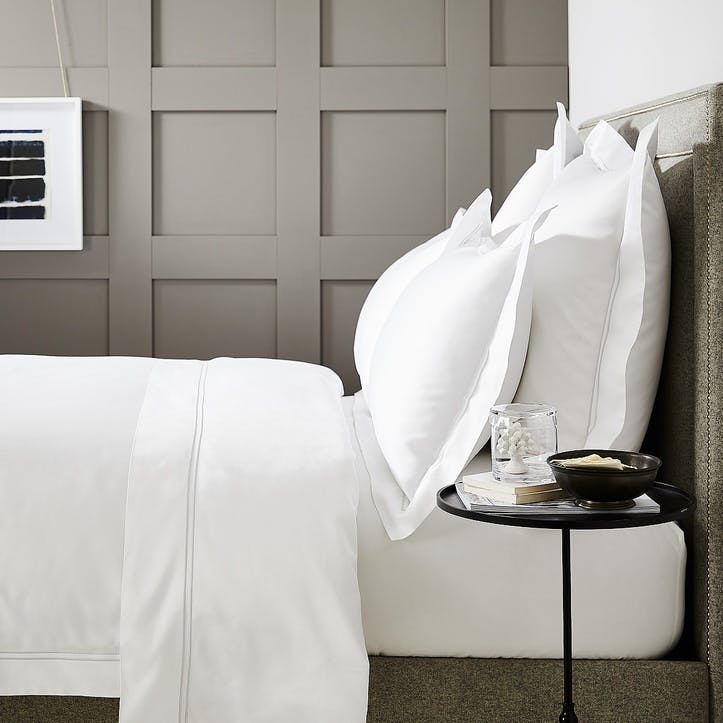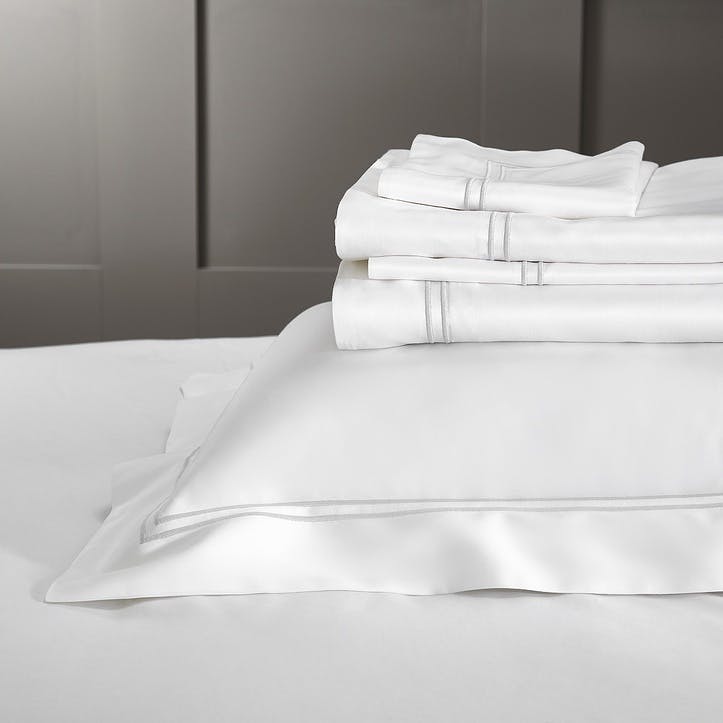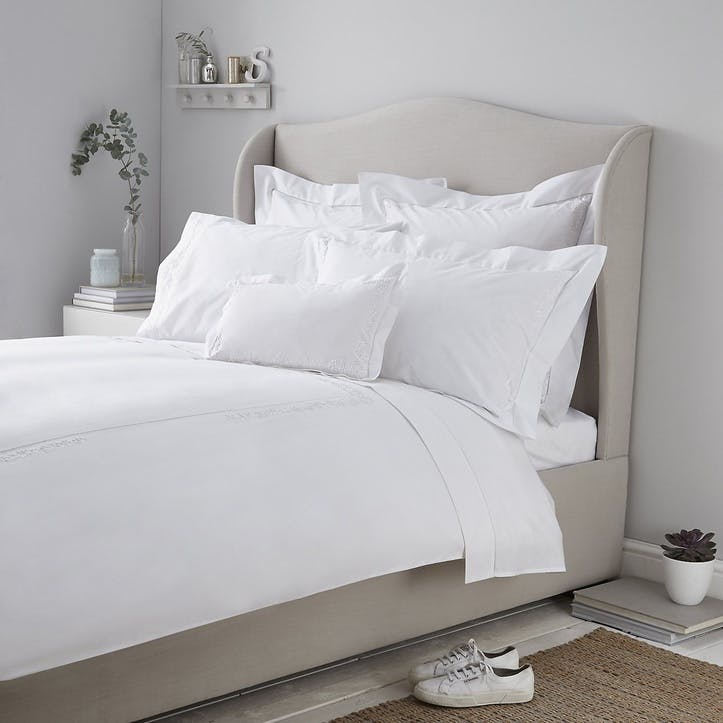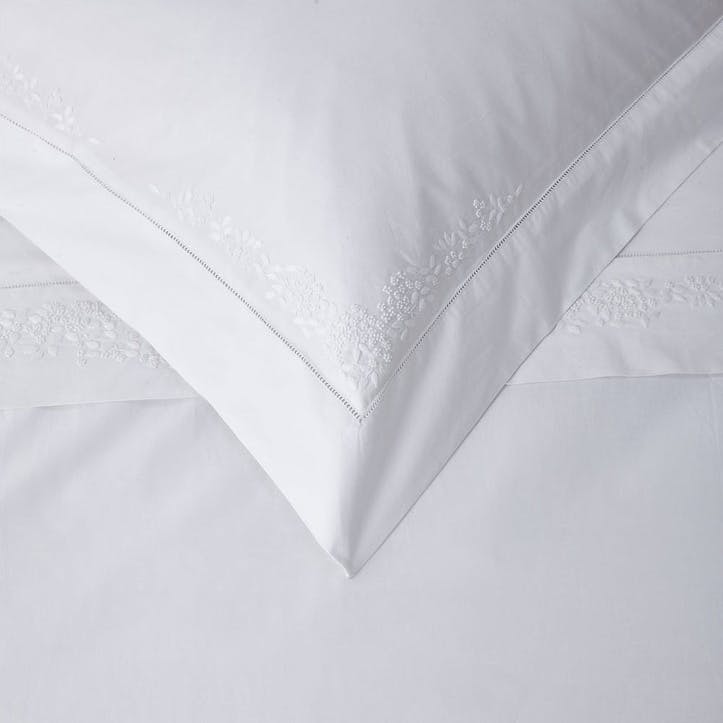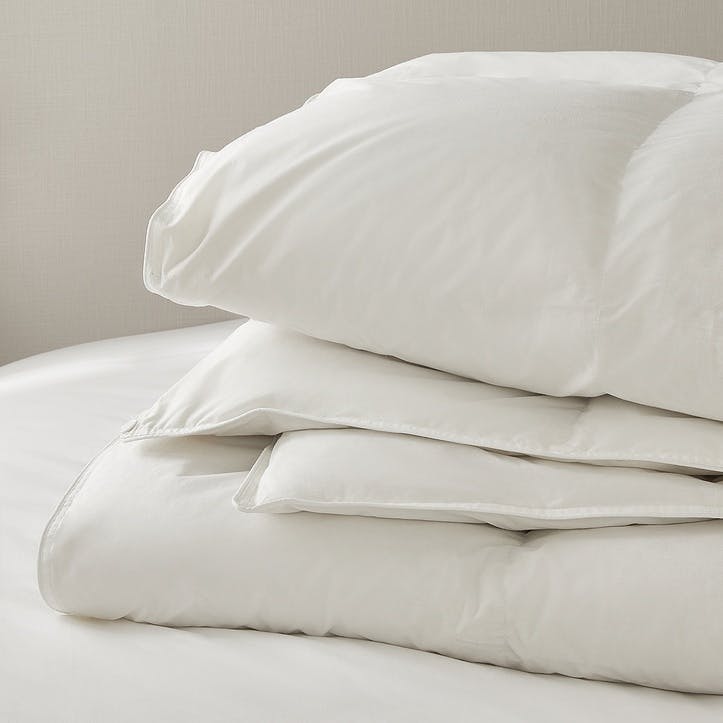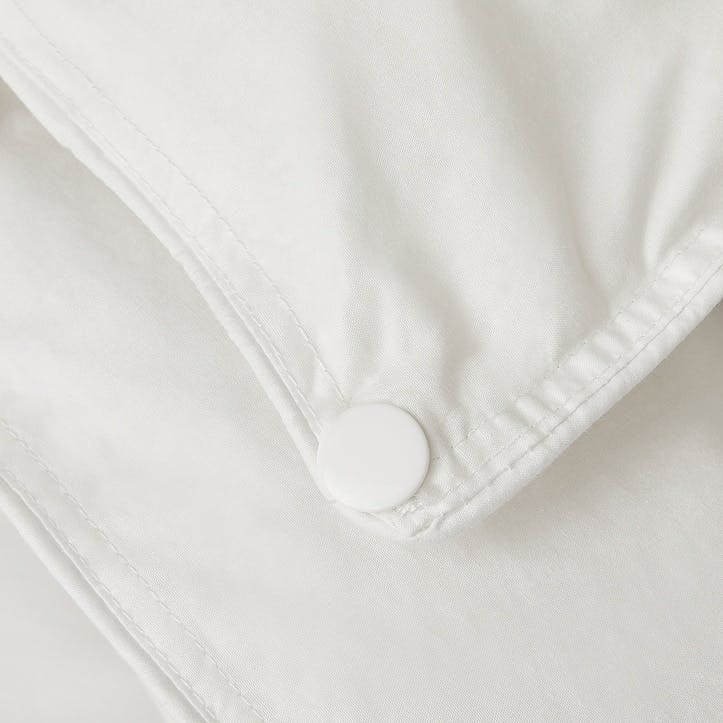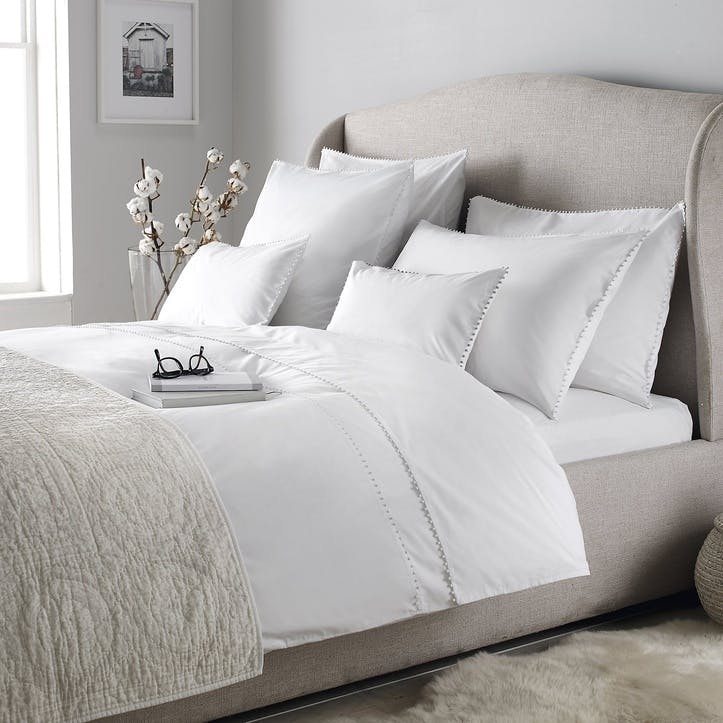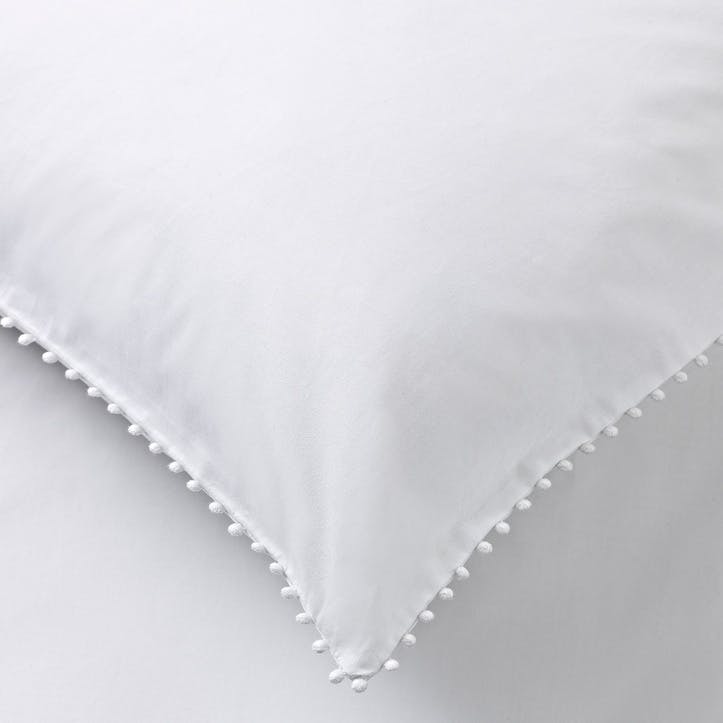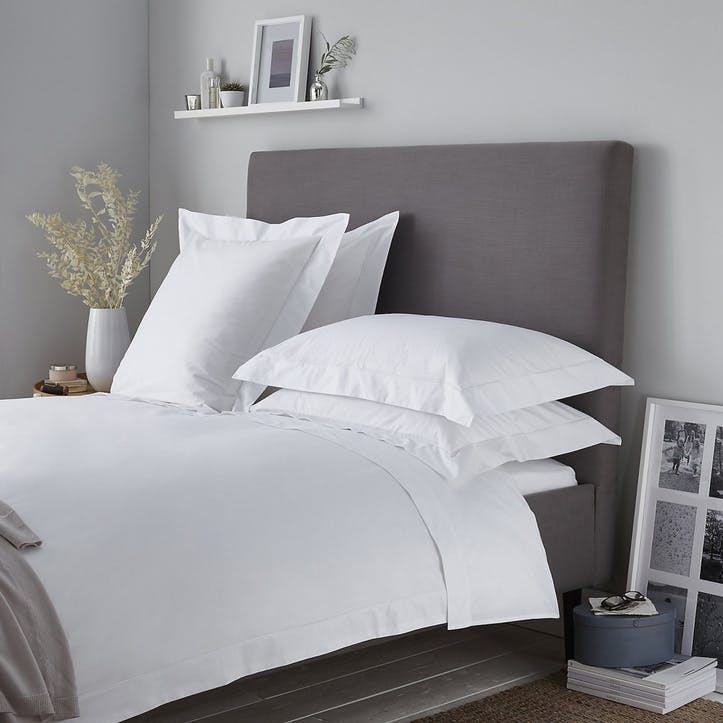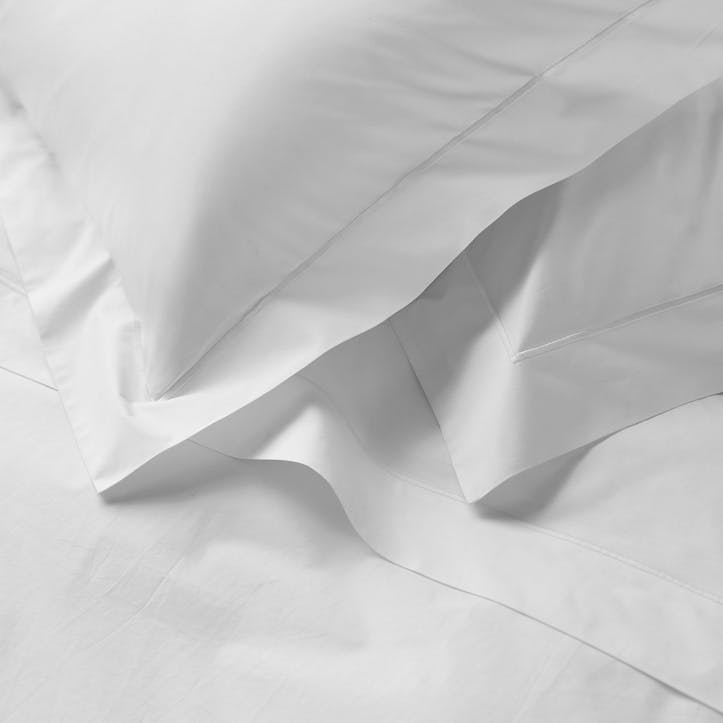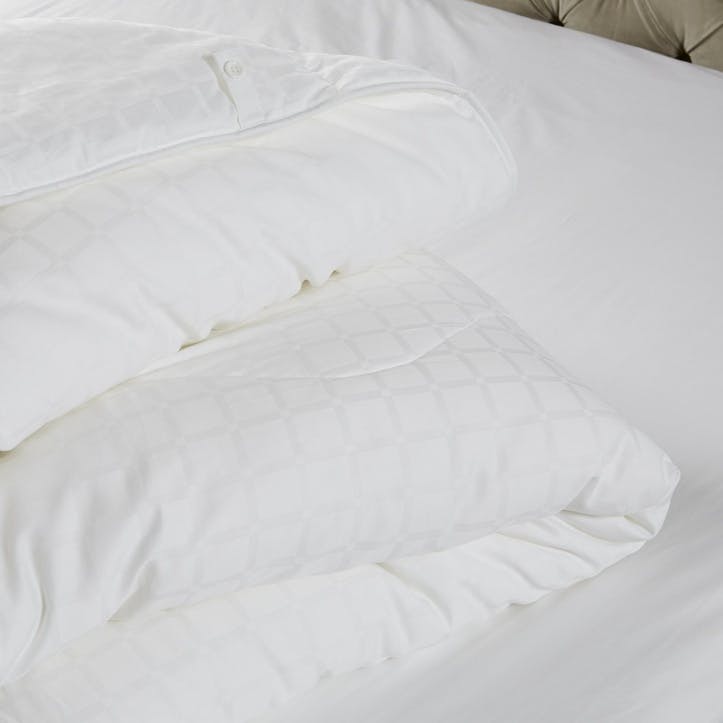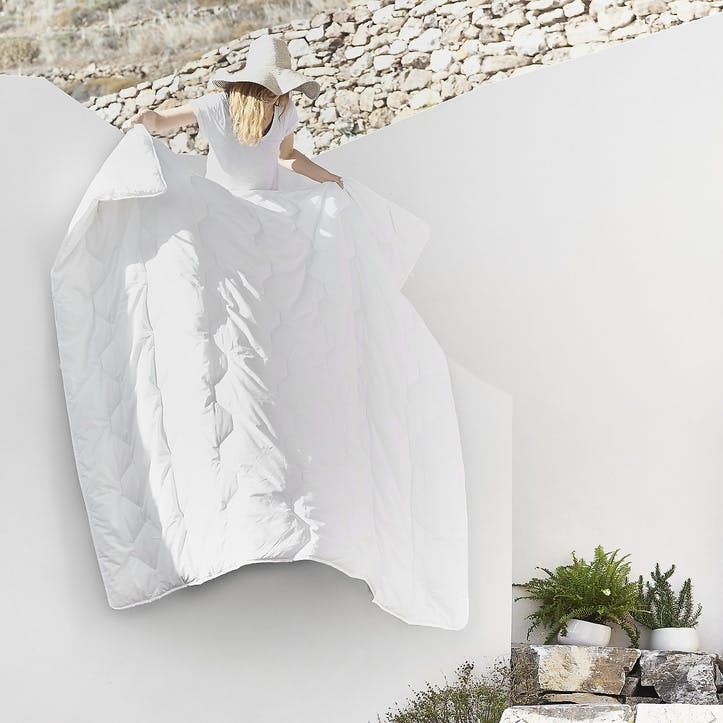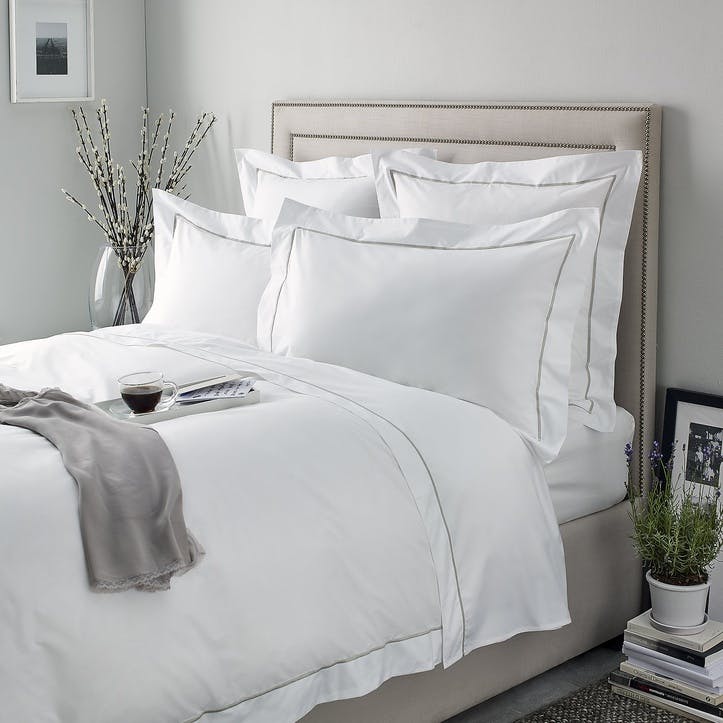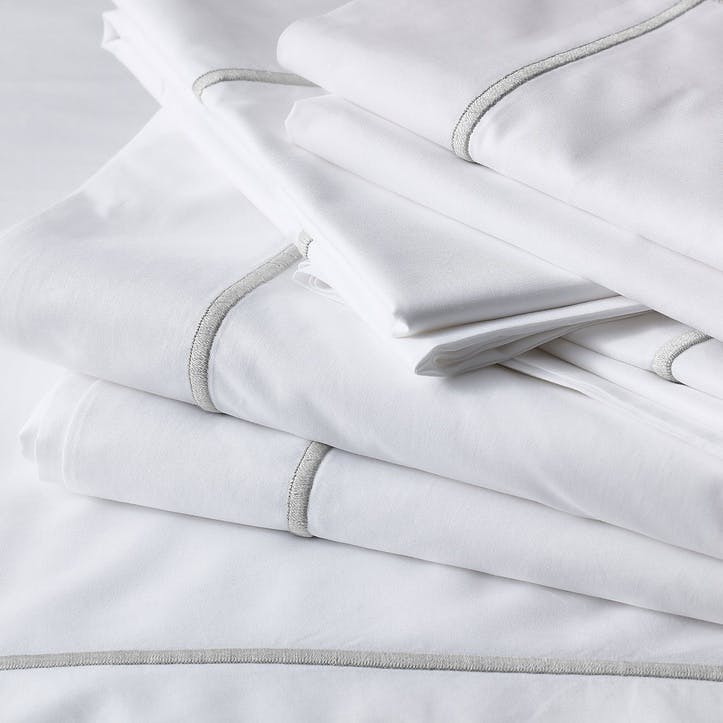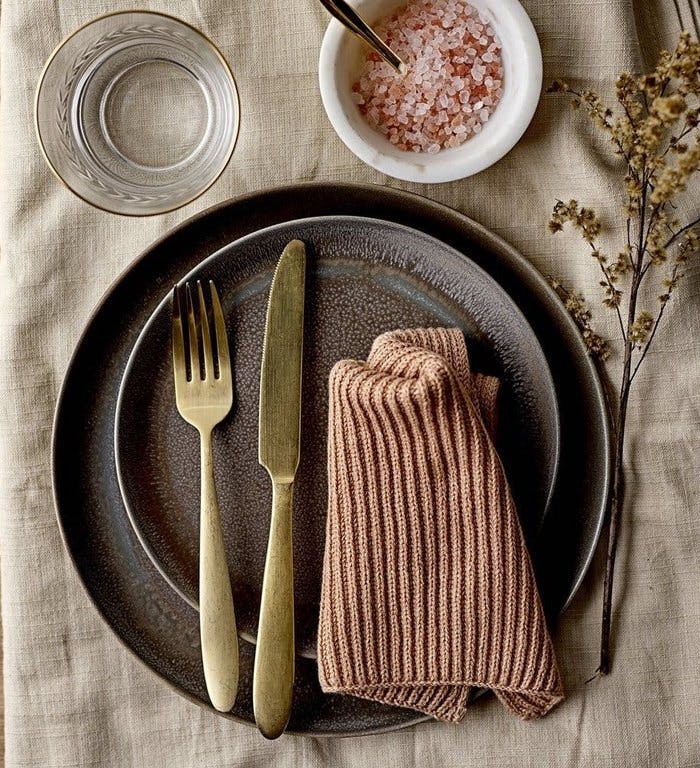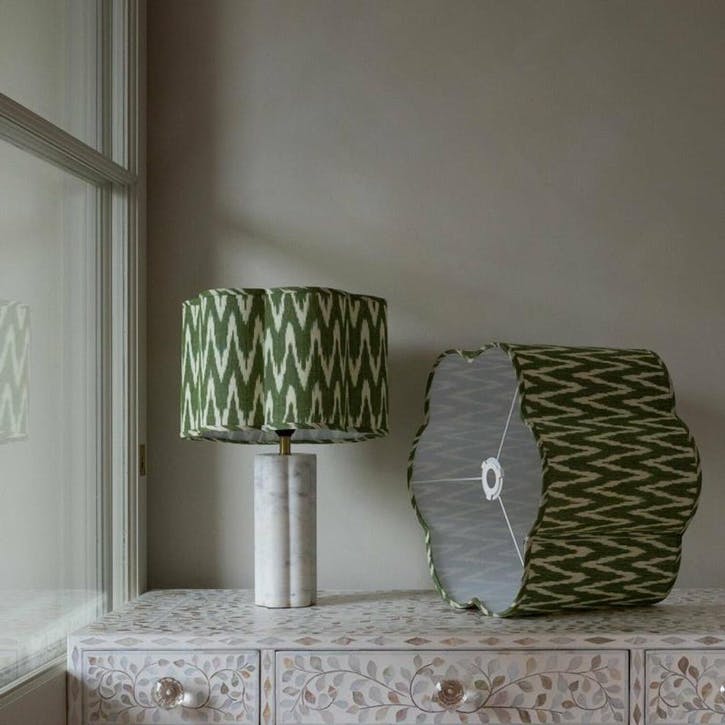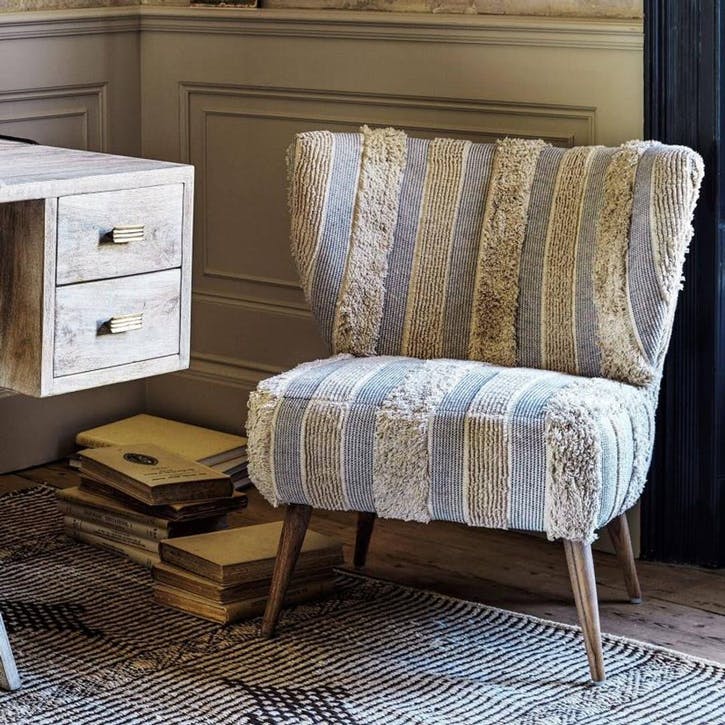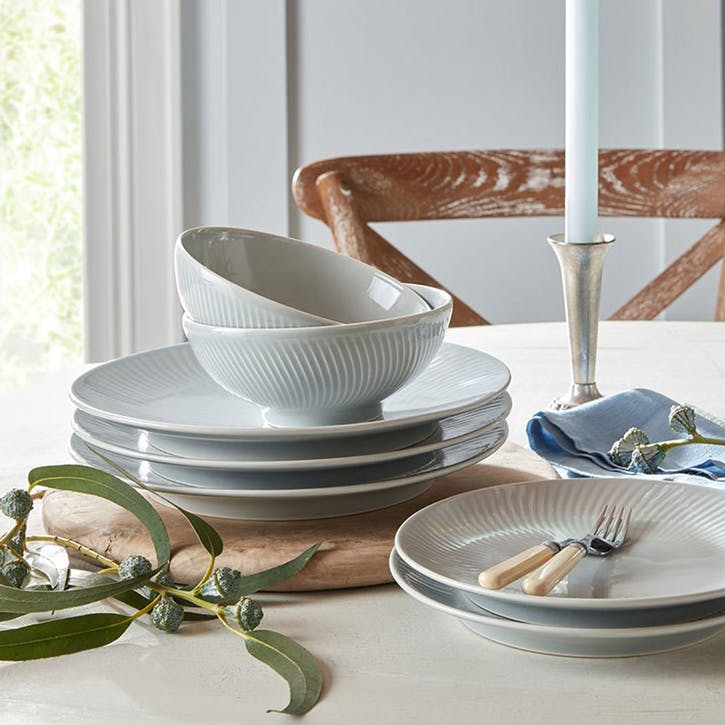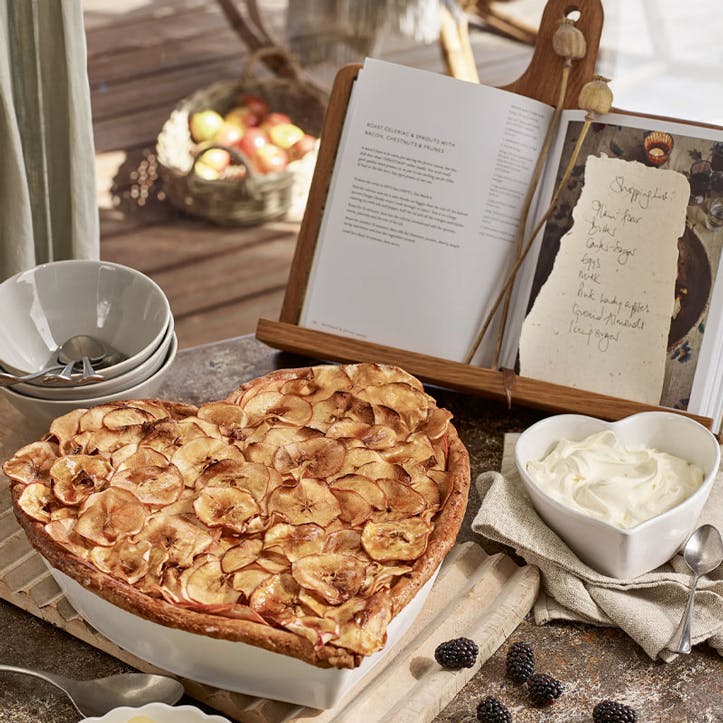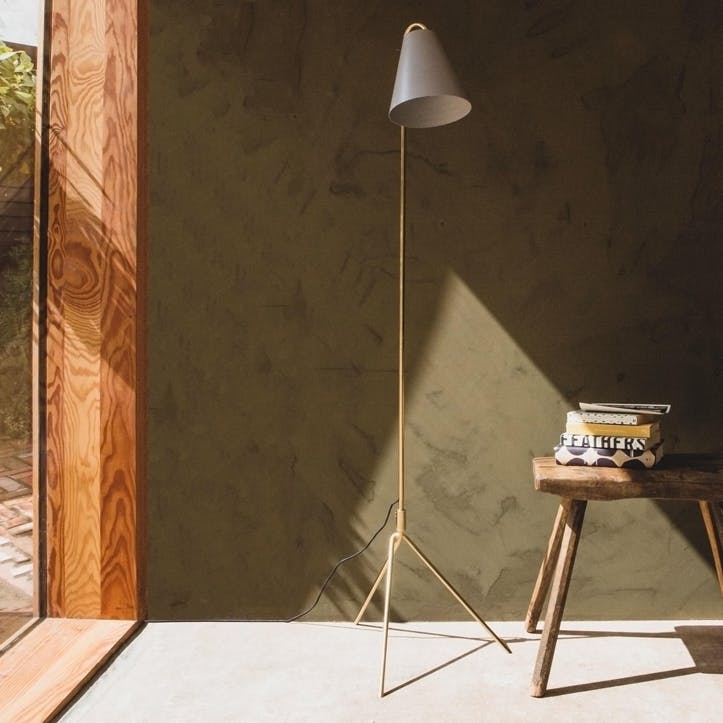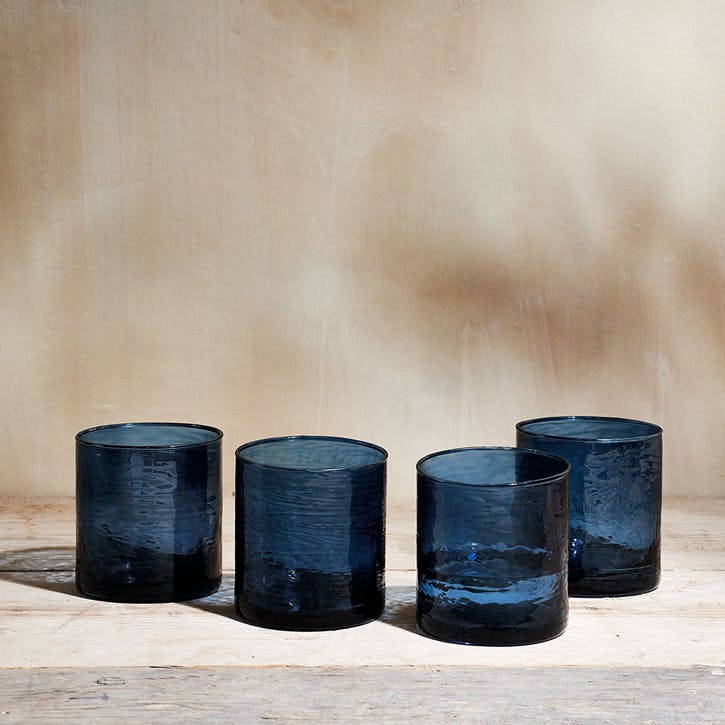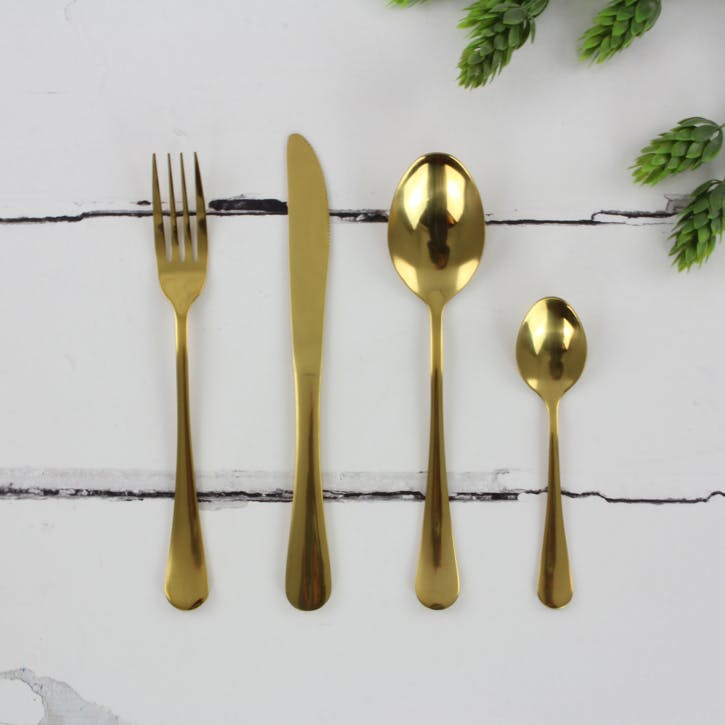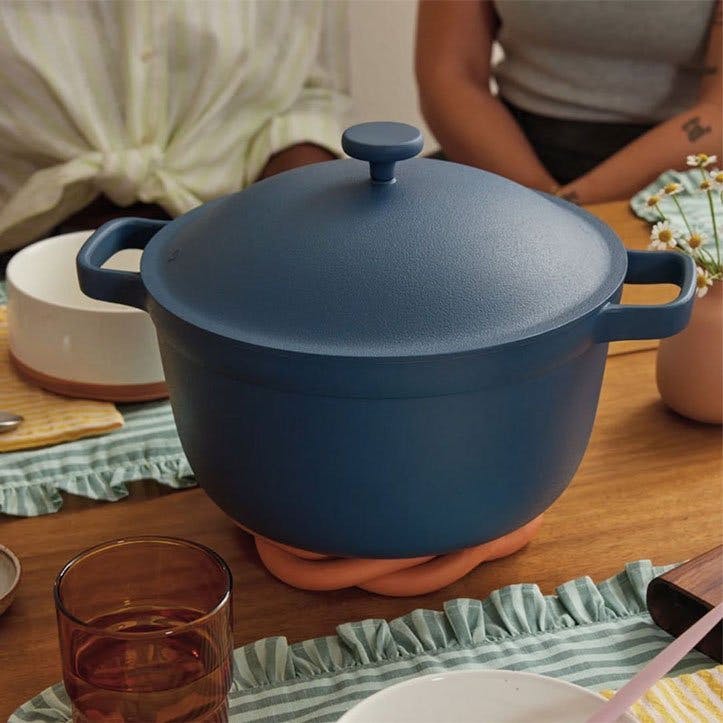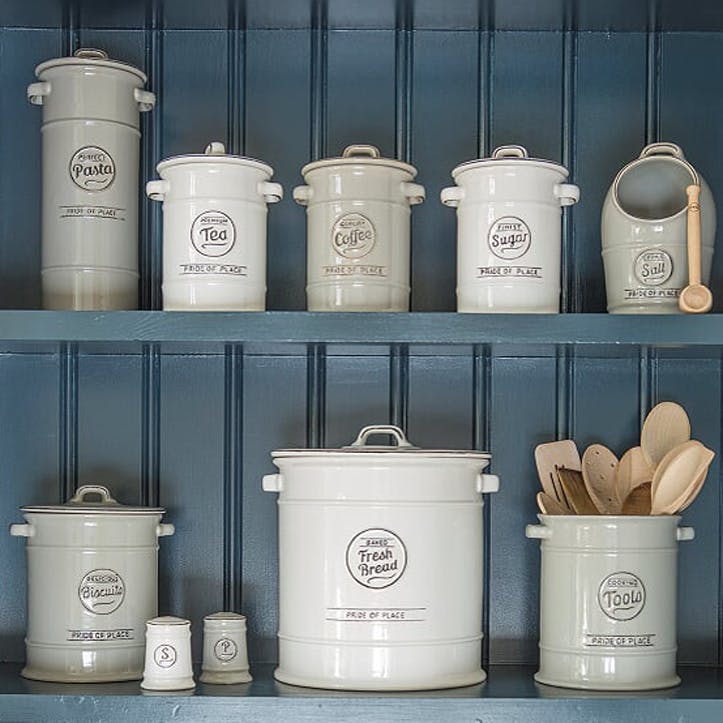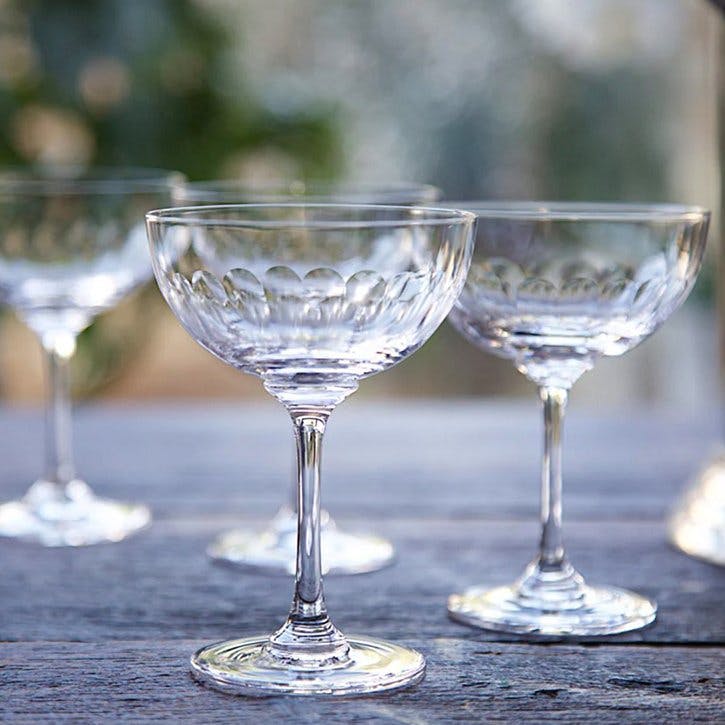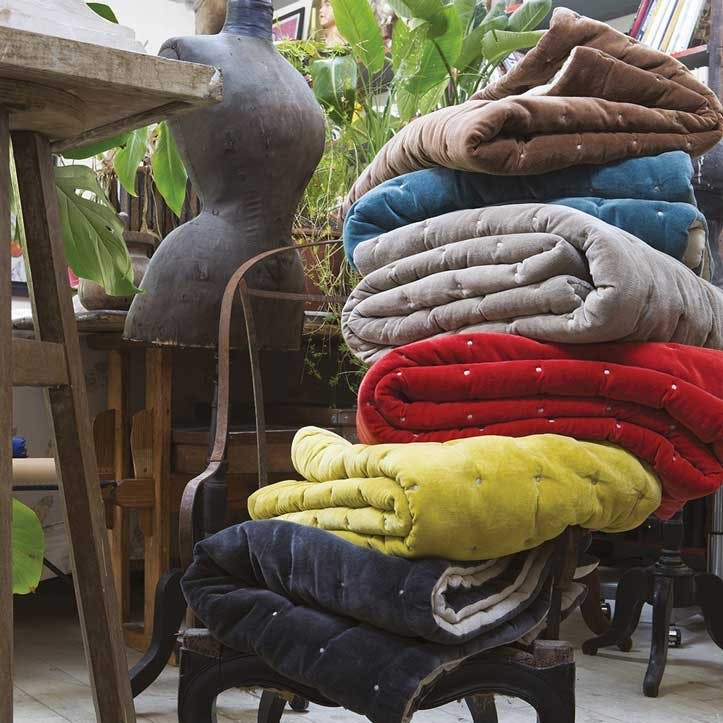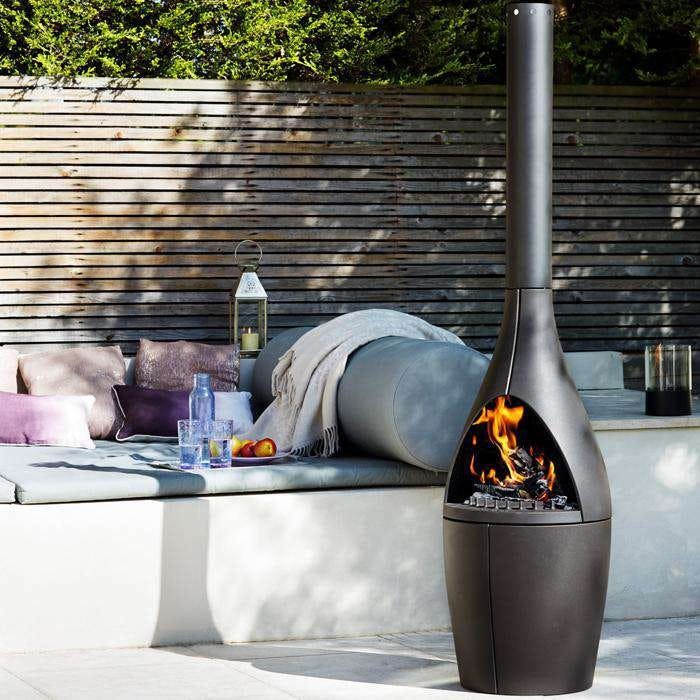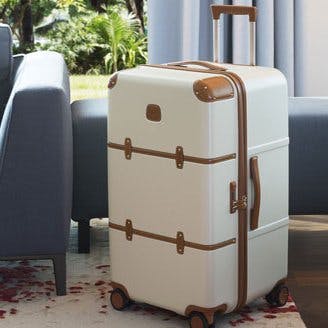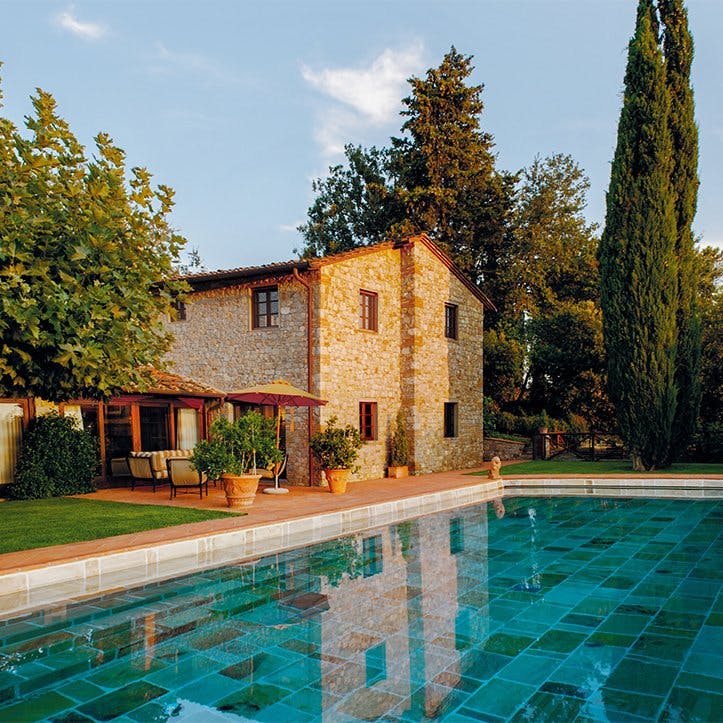The White Company is back to show us how to invest in a great duvet by learning what’s right for you.
We ask the experts big questions like the difference between feather and down, plus what on earth is a tog? We sleep six to eight hours a night, but it’s only for one hour that our bodies enter into deep sleep – the most important time for body and brain regeneration. That’s why a good night’s sleep is so important for everyone, and why choosing the right duvet to sleep under is essential, as the perfect duvet weight and filling will keep you at the best temperature to enjoy deep and restorative sleep.
Two of the main things to consider for your comfort are the type of filling (natural or non–allergenic) and tog rating (high or low).
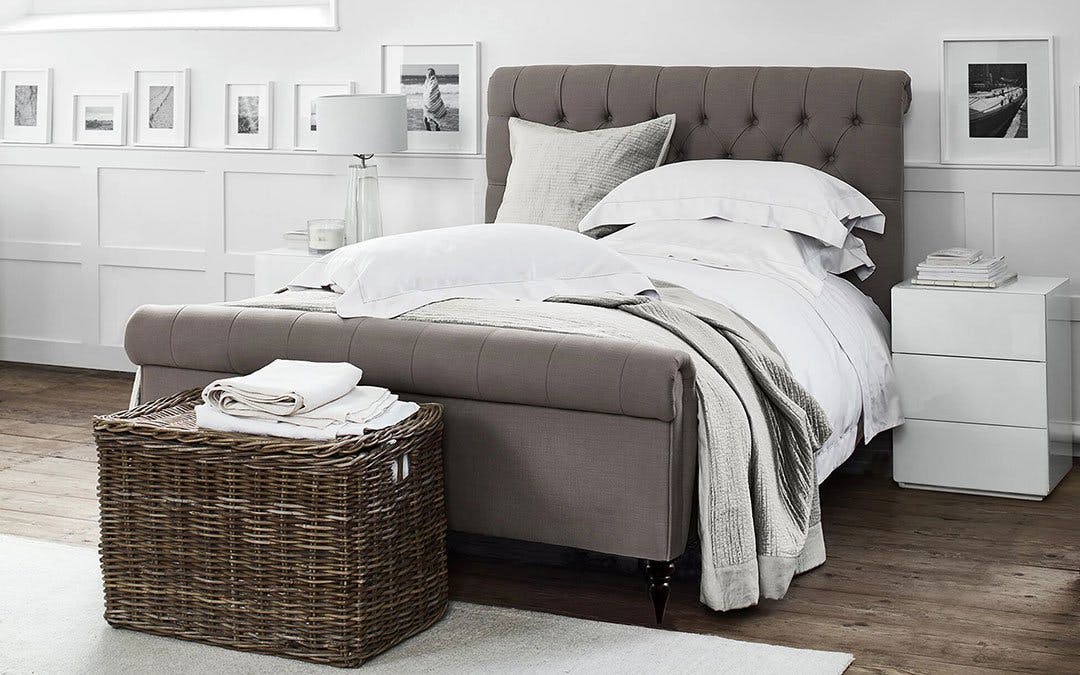
Natural fillings: feather & down
What is feather?
A feather has a curved construction, with a quill shaft from one end to the other. A series of fibres that are joined together into a flat structure run the length of the quill on both sides.
What is down?
Down consists of clusters of filaments growing from a central quill point without a quill shaft. It is the air between the down that provides the insulation effect. The larger the down is, the greater amount of air trapped between the fibres and the better the insulation. It is the down content of your duvet that ensures the insulation properties, lightness and comfort, all work together.
What is the difference?
Feathers have a curved dimension, while down has a three–dimensional construction. A down cluster doesn’t have a quill, like a feather, and for that reason it is much softer and lighter than a feather. Due to its fine and airy nature, down is considered the world’s best insulation material. Feathers give a weightier feel, as it takes more to fill a duvet, so duvets with a higher feather percentage are ideal if you do not like a lightweight cover. We only use with feathers of a supremely high quality, as they are smaller and softer, for a really warm and insulating effect.
Whiteness of down and feather
Some competitors bleach the down and feather they use to make them white. We never do this, as it damages the property of the filling. A few darker feathers doesn’t mean the fill is of a lesser quality, it just means that we have used a natural product and haven’t damaged any of the insulation properties.
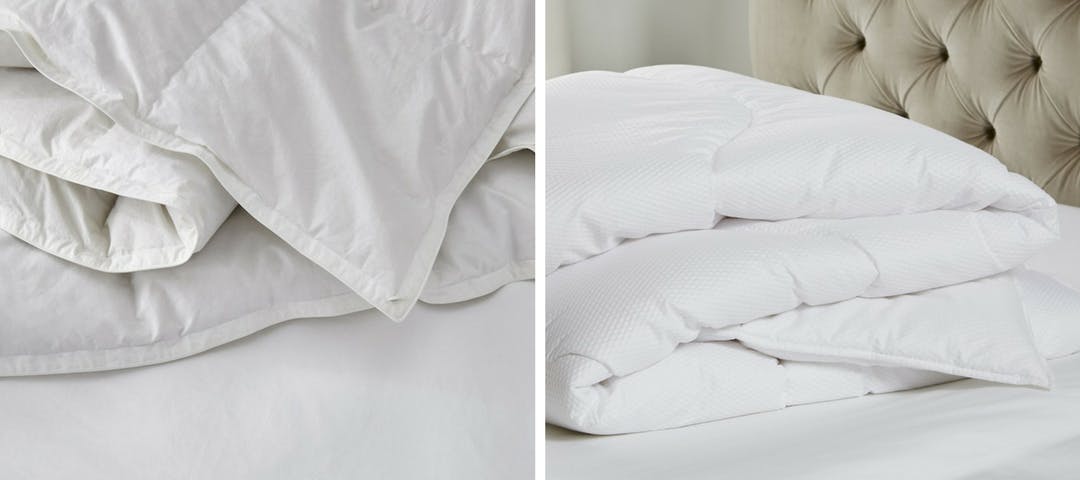
Non-allergenic fillings: hollowfibre, microfibre and silk
Synthetic duvets
These days, synthetic duvets aren’t necessarily made of stiff and unwieldy foam. If you opt for a high–quality fill, a synthetic duvet is silky soft, wonderfully warm and beautifully lightweight, with a drape that matches natural–filled duvets. And a good quality synthetic duvet, like one of ours, will not become lumpy and uncomfortable over time.
Cheaper varieties of hollowfibre consist of solid filament polyester, initially they have a good shape but lose loftiness quickly. Our hollowfibre duvets are 90% hollowfibre with 10% microfibre – the microfibre ensures that the filling does not combine together and become lumpy, while the hollowfibre gives loft and warmth – making this the ideal combination.
Silk duvets
Silk duvets are ideal if you suffer from allergies, but want the luxury of a natural–fibre filling. Silk is wonderfully lightweight and naturally hypo–allergenic. It also helps to regulate your body temperature by trapping warm air next to your skin in winter and drawing it away from your skin in summer.

Tog rating
A tog rating tells you how warm a duvet is, and is based on a duvet’s ability to trap warm air. The higher the tog rating, the warmer the duvet will be. Natural duvets have better thermal properties than synthetic duvets, so they need less filling to achieve the same warmth. So, a 9–tog natural duvet will be just as warm as a 9–tog synthetic duvet, it will just feel a little lighter. Silk duvets can’t be measured by tog rating because the fill is made of floss. Instead, their warmth is shown by weight in gsm (grams per square metre), but to make things easier for you, we always give you a comparable tog value, too.
Creating an all–season duvet that has a bespoke tog rating is easy to do with any of our duvets. To create an all–season duvet, choose a lightweight duvet (at 4.5 tog) and a warmer duvet (at 9 tog) and button them together to make a wonderfully warm (13.5 tog) duvet for a perfect night’s sleep in the winter. Once warmer weather arrives, the heavier–tog duvet can be removed and stored away ready for next winter.
